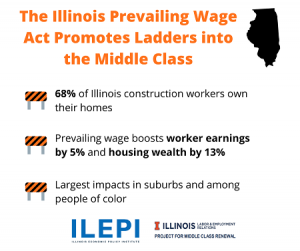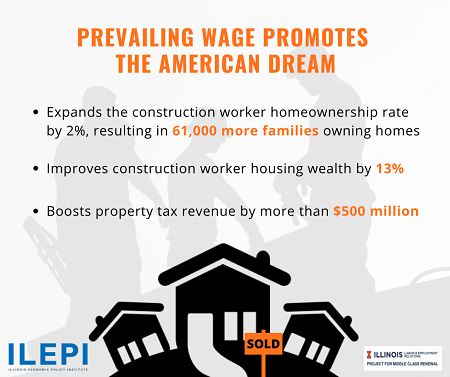Born out of the Great Depression, the Davis-Bacon Act, passed by Congress and signed by Herbert Hoover on March 3, 1931, requires all contractors on federal and federally-assisted construction projects to pay no less than the local prevailing wage rate for each class of construction worker. The law was meant to prevent out-of-state contractors from bringing workers into a high-wage market, underbidding local employers and eroding wages. At a time when our nation was scrambling for any job it could create, Congress and President Herbert Hoover placed the wages and well-being of workers ahead of profits.
Federal Davis-Bacon law sets a wage floor for federal construction projects that prevents government spending from undermining local wages and living standards. Twenty-eight states also have “Little Davis Bacon Acts” or state prevailing wage laws that apply to state-funded construction projects. In the Midwest Region, those states include Illinois, Arkansas, Iowa, Missouri, Nebraska, and Oklahoma.
The Davis-Bacon Act gives workers and contractors a level playing field to bid projects that involve federal money. Placing the criteria for a contract more on how quickly and efficiently a project can be completed and not on how low they can pay their workers.
Prevailing wage laws ensure that all contractors bidding on public construction projects will pay family-supporting wages and that these projects will be built to the highest standards by skilled, safe, well-trained construction craftspeople. The projects built under the Davis-Bacon Act have stood the test of time while enabling generations of craftspeople to build better, stronger lives for themselves and their families.
Without prevailing wage, laborers might see a reduction in jobs and hours, lower wages, and increased reliance on welfare. Not only does prevailing wage prevent those side-effects, it also helps support quality work and training, and helps the local economy.
Prevailing wage is defined as the hourly wage, benefits and overtime, paid to the majority of workers, laborers, and mechanics within a particular area. It is not the average wage of workers, nor is it always the union wage.
More information is available on the Midwestern Region LiUNA website.



